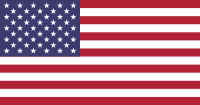
Photo from wikipedia
Background: Female genital cutting (FGC) is a form of gender-based violence with obstetrical and gynecological complications that require recognition and care. Data suggest that United States' physicians are not prepared… Click to show full abstract
Background: Female genital cutting (FGC) is a form of gender-based violence with obstetrical and gynecological complications that require recognition and care. Data suggest that United States' physicians are not prepared to care for those who have been affected by this practice. This study evaluated the knowledge and practices of United States' obstetricians and gynecologists to care for patients who have undergone FGC. Materials and Methods: This was a cross-sectional confidential survey distributed electronically to a sample of clinically active members of the American College of Obstetricians and Gynecologists. The survey consisted of questions characterizing care of patients who had undergone FGC and barriers to optimal support. Results: Five hundred forty-eight participants representing a wide range of years in practice, geographical locations, subspecializations, and patient demographics participated. Sixty-six percent of participants had cared for patients who had undergone FGC. Participants' description of their patient population racial/ethnic composition did not correlate with likelihood of treating this patient population. Forty percent of participants reported some form of education about FGC, more often among women, younger physicians, and those in practice for fewer years. Thirty-one percent of participants were comfortable counseling about and 20% were comfortable performing deinfibulation; these percentages were higher among those who had received education or had recently cared for an affected patient. Participants reported insufficient training as the largest barrier to providing care to women. Conclusions: While most physicians in this national cohort had cared for women who had undergone cutting, a minority had any form of education. However, prior education correlated with indicators of improved care. Physicians require additional guidance in treating this important and growing patient population.
Journal Title: Journal of women's health
Year Published: 2021
Link to full text (if available)
Share on Social Media: Sign Up to like & get
recommendations!